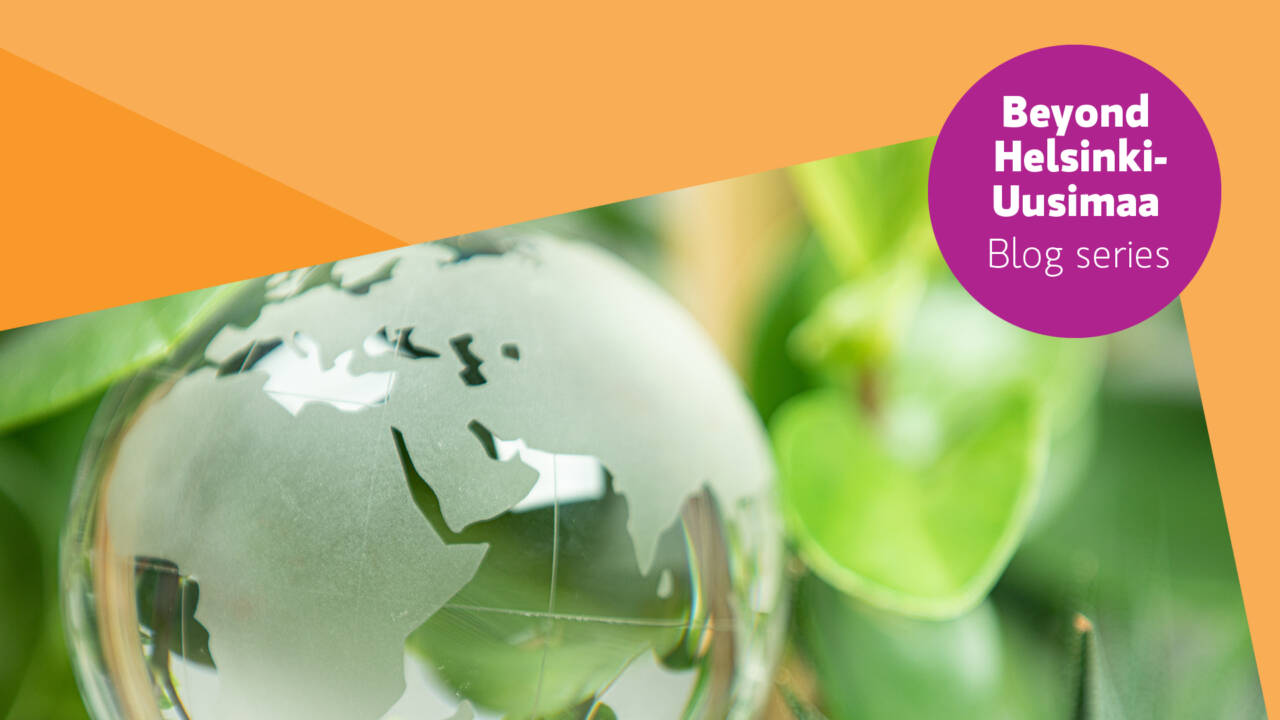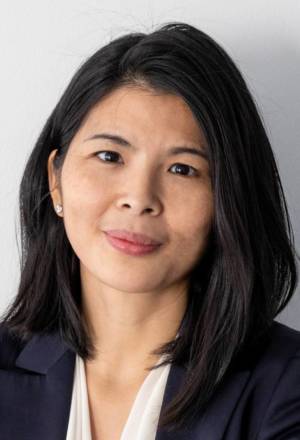From Regional Innovation to Circular Diplomacy: why Europe’s Circular Future Depends on its Regions and Cities

Nearly a decade ago, I participated in the first World Circular Economy Forum (WCEF)(You are transferring to another service) in Helsinki. At the time, the circular economy felt like a bold, systems-level vision—still something new, still experimental. But even then, it was clear: the most powerful circular economy transitions wouldn’t happen in isolation. They would be built through connections across different sectors, levels of government, and country borders.
Since then, I’ve had the opportunity to work on many of these connections through platforms such as the EU’s Circular Cities and Regions Initiative (CCRI), the European Circular Innovation Valley (ECIV), and the Helsinki-Uusimaa Circular Hub.
One thing has become clear: the circular economy isn’t just a technical fix or environmental upgrade. It’s a strategic pathway to resilience, competitiveness, and sovereignty. And it is often regions and cities, working in collaboration with businesses, academia, and civil society, that are best positioned to facilitate this transition.
The circular economy isn’t just a technical fix or environmental upgrade. It’s a strategic pathway to resilience, competitiveness, and sovereignty.
Circular Economy Needs More Than Innovation — It Needs Coordination
We often speak about circular economy in terms of innovation in materials, technologies, or new behaviours. But circularity is more than that. It’s about aligning systems — economic, social, and regulatory — so that circular models can scale. In EU policy, this is reflected in language such as interconnected innovation ecosystems, industrial symbiosis collaboration, and place-based transformation.
When these ecosystems stretch across borders — as they do through ECIV, CCRI, or global partnerships — we enter what I’ve come to think of as circular diplomacy. It’s not diplomacy in the traditional, treaty-making sense. It’s something more agile and bottom-up: the active collaboration between regions and cities to accelerate the circular transition, align strategies, share risks, build joint value and scale innovation.
And we’re already seeing what this looks like in practice.
Helsinki-Uusimaa’s Circular Diplomacy in Practice: Connecting through the World Circular Economy Forum
Finland has long been a pioneer in the circular economy, and the World Circular Economy Forum, led by the Finnish Innovation Fund, Sitra, has become one of the most influential platforms for dialogue and collaboration, bringing together actors to drive the circular transition.
For the Helsinki-Uusimaa Region, WCEF has served as a platform to boost visibility and connect with global partners. In 2023, the Regional Council organised a side event with over 100 participants, and at WCEF 2024, we hosted three sessions, reaching more than 230 attendees. A significant share of the forum’s 1,500+ participants also visited our stand or followed the sessions online. These engagements reflect the growing international interest in our regional work and highlight the value of WCEF as a venue for practical circular diplomacy.
In early 2025, the WCEF took a step forward with the creation of the EU Circular Economy Resource Centre (CERC)(You are transferring to another service) — a joint initiative of the European Commission, Sitra, the Finnish Ministry of Foreign Affairs and Belgian Development Agency Enabel. While still in its early stages, CERC has the potential to create new opportunities for circular diplomacy, enabling EU member states and local actors to support like-minded countries in the Global South, Asia-Pacific, and North America in their circular transition.
Circular diplomacy is already being practised through region-to-region cooperation.
Scaling through EU initiatives
Helsinki-Uusimaa is also actively involved in two major EU initiatives that embody the spirit of circular diplomacy. We are one of 12 pilots selected under the Circular Cities and Regions Initiative(You are transferring to another service), launched by the European Commission. CCRI provides technical assistance and peer-learning opportunities to support local and regional authorities in implementing circular systemic solutions in accelerating their transition to a circular economy. Through this platform, Helsinki-Uusimaa finds a common ground to collaborate with many other European cities and regions in vast topics from systemic transitions and stakeholder engagement to the development of circular infrastructure.
At the same time, Helsinki-Uusimaa is a partner in the European Circular Innovation Valley (ECIV) project(You are transferring to another service), funded by the Horizon Europe. Coordinated by the Government of Navarra, the initiative will launch two EU-wide calls to implement innovation missions in building a pan-European circular economy ecosystem. The calls will support more than 30 collaborative pilots and promote policy alignment in key industrial sectors, including construction, food systems, electronics, and textiles, addressing shared challenges through coordinated regional action.
These initiatives demonstrate that circular diplomacy is already being practised through region-to-region cooperation, grounded in joint work, mutual learning, and a shared ambition to scale circularity across Europe.
Building Local Connection through the Helsinki-Uusimaa Circular Hub
Alongside the European partnerships, our work at the regional and municipal level forms the foundation of circular diplomacy. The Helsinki-Uusimaa Circular Hub(You are transferring to another service) has become a central platform for knowledge sharing, co-creation, and ecosystem development. To date, the Hub has hosted over 20 events, supported or launched 23 pilots and projects, published 11 knowledge outputs, and engaged nearly 1,000 participants from across sectors.
A key instrument of this local coordination is our efforts in articulating a regional commitment to the Circular Economy Green Deal. The process brought cities and municipalities across Helsinki-Uusimaa to align their initiatives with a shared regional vision. There is a particular focus on the built environment and regenerative food systems, areas where systemic change is both urgent and actionable.
The Helsinki-Uusimaa Circular Hub has become a central platform for knowledge sharing, co-creation, and ecosystem development.
What makes this work diplomatic is that it does not stop at regional borders. These locally driven models and pilot actions are designed to connect with EU initiatives, inform cross-regional cooperation, and scale through platforms like CCRI and ECIV. In this way, we are embedding a bottom-up diplomacy of practice — one that strengthens coordination across levels of governance and ensures that place-based circular solutions are also building blocks for Europe’s broader transition.
Why Regions and Cities Matter More Than Ever?
In the face of global shocks — from war and supply chain volatility to resource scarcity — a circular economy is no longer just about sustainability for us. It’s about strategic resilience. It’s about securing the materials, knowledge, and capabilities we need to thrive — without overreliance on fragile global flows.
We’ve come a long way since that first WCEF. But we’re not yet where we need to be. While momentum is building, the pace of transition remains too slow. According to the Circular Economy Outlook 2024(You are transferring to another service) – Nordics, Finnish listed companies are demonstrating a strong commitment to circular strategy and are leading the transition in many areas. However, implementation continues to lag, and more systemic support is needed to turn ambitions into scalable, real-world impact. Too many promising circular innovations remain stuck in the pilot phase, disconnected from the systems that would allow them to scale.
Looking Ahead: A Call to the EU to Backing the Builders of Circular Europe
If we want circular solutions to scale, we must invest in the systems and structures that enable them to succeed. That means:
- Providing long-term support for regional and city-led hubs like ECIV, CCRI, and place-based innovation ecosystems in the regions and cities — not as one-off projects, but as core infrastructure for Europe’s green and industrial transition.
- Developing circular markets — through green public procurement, harmonised standards and better access to high-quality secondary materials.
- Nurturing human capital and local capacity — because circularity happens in buildings, businesses, and behaviours, not just in policies.
In 2026, the European Commission plans to adopt a Circular Economy Act (CEA)(You are transferring to another service). Given this timeline, we are at a pivotal moment. The next phase of EU policy must recognise that cities and regions are not just merely implementers but co-creators of Europe’s strategic transition, deeply embedded in the ecosystems and mission-driven actions that will define its success.
Helsinki-Uusimaa’s experience—and that of many others—shows that when empowered, local and regional ecosystems can drive innovation, connect value chains, and scale circular markets across Europe and beyond. But this requires continued investment, enabling policies, and a stronger regional voice in shaping what comes next.
We must ensure that the future of Europe’s circular economy is built from the ground up — led by connected, empowered, and recognised cities and regions and expanded globally through our shared “circular diplomatic” ambition.
Beyond Helsinki-Uusimaa
Beyond Helsinki-Uusimaa is a blog series in which the author examines the megatrends, initiatives, partnerships, and frameworks shaping the Helsinki-Uusimaa region beyond its borders. The series explores why and how the region is positioning itself as an influential player within EU networks and global innovation ecosystems, now and in the future.

Christine Chang
The writer works as a Senior Advisor on EU Affairs. With over a decade of experience in Taiwan, the USA, and Finland, she leads EU-funded initiatives, driving sustainable growth and innovation in Helsinki-Uusimaa and across Europe.
Contact information:
+358 44 353 3014, christine.chang@uudenmaanliitto.fi
Take also a look at these
 News
News
12.6.2025
Helsinki-Uusimaa Regional Council developing regional foresight together with European partners
The European project Strategic Foresight Partnership (SFP) aims at strengthening regional foresight competence and changing interregional foresight information and sharing best practices.
 Blog
Blog
28.5.2025
Meet Aino: The First AI Native Generation in Helsinki-Uusimaa Region
Welcome to 2050. The world may look familiar, but beneath the surface, algorithms shape nearly every aspect of life. A new generation has grown with artificial intelligence (AI) as ordinary as electricity. This is the first truly AI-native generation raised in an 'algorithmic future,' a world where complex systems tailored to individual preferences guide decisions, deliver services, and influence relationships. In her blog post Senior Adviser Christine Chang considers how AI is shaping human behaviour, education, and daily life.